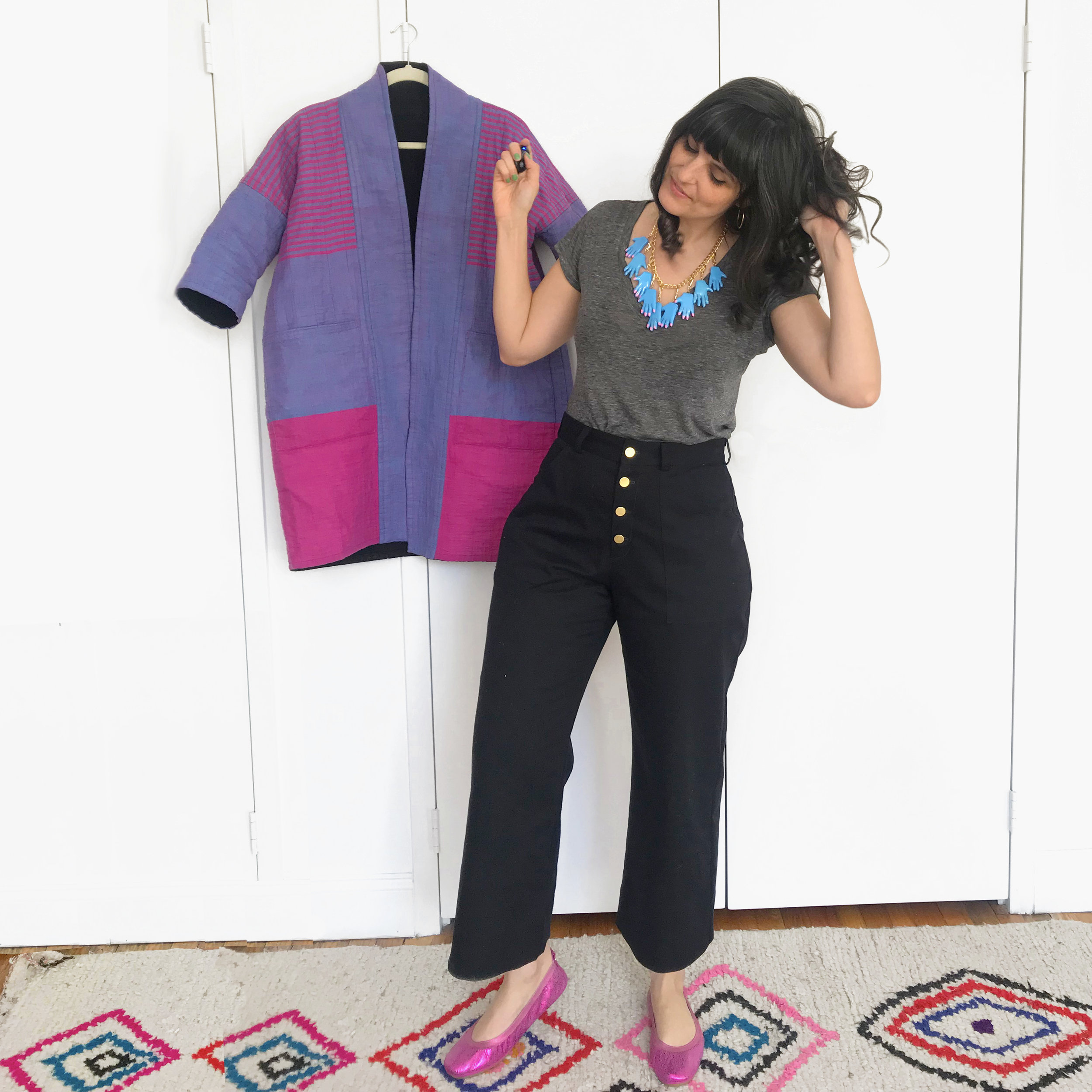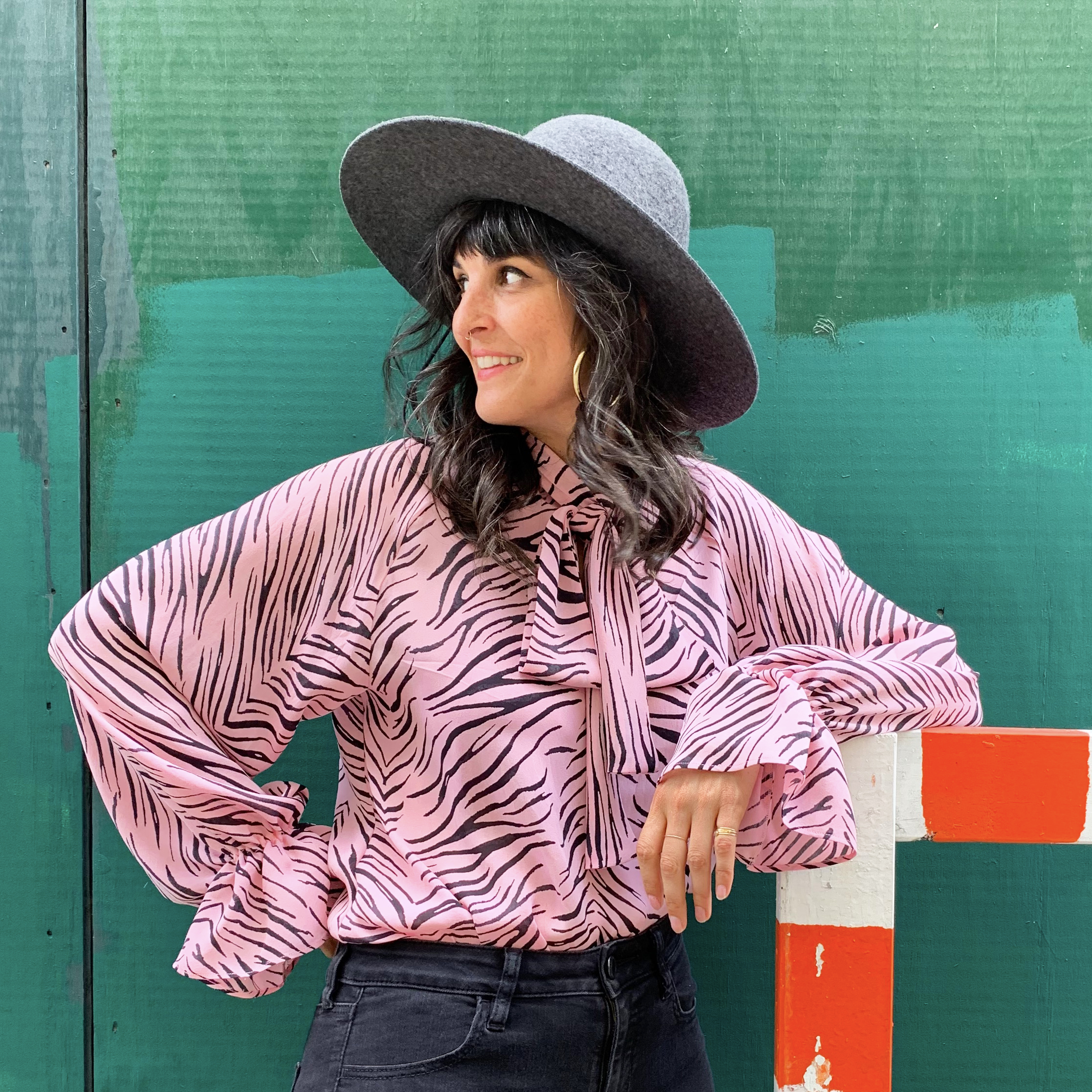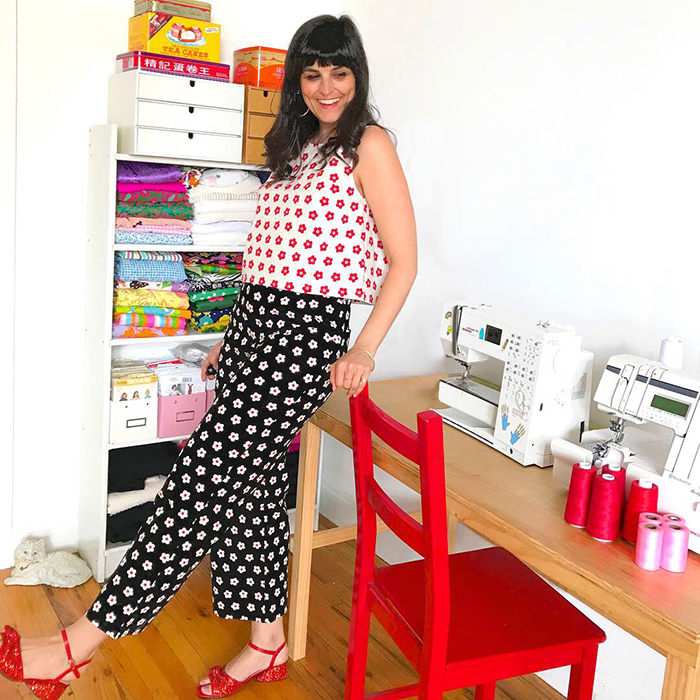2019: REFLECTING ON A YEAR OF SEWING MY OWN CLOTHES
Casually hanging out with the clothes I sewed myself in 2019 (I realize now that yellow dress snuck in! that’s a 2018 make).
My 2019 New Year’s Resolution was to sew all of my own clothes. I still can’t quite believe I did it! It was a lot of sewing. Like, really. A. LOT. OF. SEWING. I sometimes sew in the mornings, but mostly at night, and often until very late. It is meditative and focused, and I cannot look at my phone. As a freelancer, I have an ever-changing schedule, and I wedged in sewing wherever possible.
For some backstory of how I got here, you can read about my 2018 sewing goals. I’m not sure how complex my thinking was when I set my 2019 resolution….I knew I would benefit from a long term creative goal, and I knew it would help me improve my sewing skills in a tangible way. But did I know all the other ways sewing for myself would impact me? This is a long post, but I wanted to touch on a bunch of my takeaways.
My first (of many) pair of True Bias Lander Pants, worn with a Buried Diamond handmade charms necklace, and my quilted and fully reversible Wiksten Haori hanging behind me.
You know when you take 10 pairs of skinny jeans into the fitting room, filled with hope and excitement, only to emerge, slightly disheveled and broken hearted, to hand them all back to the attendant because none of them fit? I avoided that feeling for an entire year. That alone is reason enough to me to keep sewing.
I don’t have a mannequin-shaped body, or even a Big Four pattern shaped body. But when you have to sew everything you plan to wear, you start to work out fitting pretty quickly. I spent a month making myself a basic pants pattern - 5 muslins, and I’ve been tweaking it ever since - and it was an absolutely worthwhile use of my time. I consulted the forums on Pattern Review, many blog posts, and books. (Don’t shy away from vintage sewing books, the techniques haven’t changed and they are often super thorough). Improving my fitting abilities boosted my confidence both with sewing, and with wearing my clothes out in the world. When your clothes fit well, you look your best. I categorized all of this as self care. I was making clothes for my body, so they would make me look and feel good. No negativity allowed.
Vintage Butterick 5673 in silk georgette that I dyed pink with RIT dye. This felt like a triumph of fabric and pattern pairing!
The more I sewed, the better I became at pairing fabric with patterns. This is tricky! There was a steep learning curve for me; at first, I was always using too-stiff fabric, leading to uncomfortable, weird, bad garments. Fabric shopping is always a thrill, but sewing instead of buying clothes means delaying gratification. You don’t know exactly what something will look like until it is complete, and there are a few stops along the way, even in the most successful projects, where I completely doubt the outcome. And yes, there are duds. There are wadders. I get rid of failed projects quickly because I like to keep moving forward. It doesn’t serve me to keep them around. (I take fabric to the fabric recycling stand at my local farmer’s market; if you don’t have access to that, some H&M locations offer fabric recycling.)
Bound buttonhole tests for my last project of 2019, a wool coat using a Japanese sewing book pattern. I made tests with underlining, interfacing, various sizes, etc. before deciding on the perfect recipe.
I was constantly teaching myself new techniques this year. I learned from blog posts, youtube videos, books, and practice, practice, practice. Sewing is mostly practice. Every project is one seam at a time. I never nail things on the first try, that’s why you have to test buttonholes every time! I also got really into the different feet my sewing machine uses; I now use them for professional looking buttonholes, edge stitching, rolled hems, and perfect quilting (thanks to my walking foot). It is more than worth the time and effort to learn how to use them. You can find step-by-step videos for this on YouTube.
My stash: this is about 1/2 of my fabric, and all of my patterns except Japanese sewing books, Burda and Patrones magazines.
I am very particular about color (which is why I like to dye my own fabric), print (I am literally a printed textile designer by trade), and the style of my clothes. I love being in control of how my clothes look. I know everything will “go together” because I am the person curating it. I select the exact fabrics and patterns I envision myself wearing, and I know everything will match and fit properly. This was the most satisfying aspect of sewing for myself.
As I resisted shopping, I became less impulsive with all purchases. When browsing a shop, I’d ask myself: Is this useful and well made? Do I need it? Will I want it in 6 months? A year? (Well, that explains why I don’t have any seasonal/holiday decorations.)
I became more mindful of my supplies and where they come from. I buy most of my fabric and notions locally in the garment district (though it’s not secret that I love souvenir fabric when I travel), and began bringing my own reusable bags to midtown to avoid the plastic ones. This is a small change, but things add up, and I’m trying to move in the right direction.
A linen dress I sewed with a vintage pattern and dyed a custom shade of lilac using RIT dye.
Moving into 2020, I have complex thoughts about sustainability and the environment in relation to home sewing and the apparel industry at large. This weighs heavy for me because my only career has been as a textile designer for major apparel brands, and I am aware of how polluting the industry is - the issue hits me professionally and in my home sewing hobby. As I research this more, I realize it deserves a dedicated post, so I’ll get into that in greater depth in the near future.
Current sewing space! This is in the corner of our bedroom, and I still use the desk Jason built me in 2017. He asked if I wanted an update, something more polished. But this one is perfect.
Lastly, I can’t talk about sewing without mentioning the online sewing community. When I got back into sewing in 2017-18, I was completely unaware of Sewing Instagram. Dang! Searching pattern hashtags, following designers and sewists around the world…. I literally didn’t know that existed. Sewing can feel isolating, because unless you are in a class, you are probably alone with a podcast.
But as I started posting sewing photos online, I began connecting with some of the most wonderful, warm, knowledgable kindred spirits. Sewing is alive and well on the internet! Without finding that online community, I don’t know if I would have stuck with my goals. Instagram made me feel accountable (another can of worms: losing/gaining followers as your personal interests evolve…), and incredibly inspired. I have no regrets in changing it up online and shifting from jewelry and commerce to sewing for personal use and enjoyment.
Let’s end on that high note! If you have any questions about sewing my own clothes for a year, please ask! I’m happy to share. And if you’re considering sewing your own clothes for a year (or any length of time), I am really excited for you! XO, Martha






